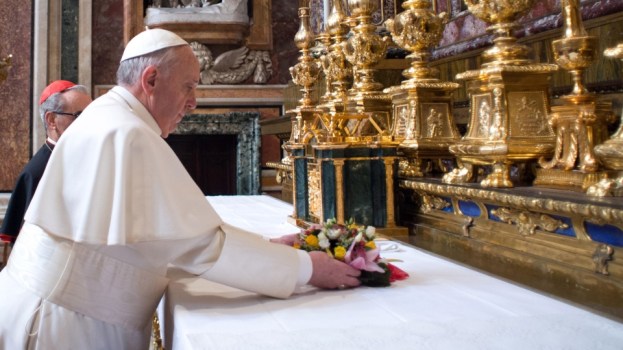
Last week, 115 cardinals of the Catholic Church – the vast majority old, white men – locked themselves in a room and voted by paper ballot until one of them was elected as the 266th pontiff. When the selection was made, they sent up a smoke signal.
Yes, this is an organization in need of a technological upgrade.
The man they selected, the former Cardinal Jorge Mario Bergoglio of Argentina, has 40,000 followers on his Facebook page. As Pope Francis, one of his first acts was to reinstate the papal Twitter account, @Pontifex, that had been shuttered since Benedict XVI decided to retire. The former pope had only tweeted 40 or so times in the past year.
But helping the Vatican move into the 21st century goes a lot further than just hoping they update their status a little more. As any pundit was more than happy to tell you on Wednesday evening – when Francis was announced as pope – the Catholic Church faces serious problems.
Mass attendance is on a steady decline around the world, especially in the US. There are fewer young men entering the priesthood. Corruption and largesse are rampant in Rome. The sex abuse scandal will not go away, flaring up again in Europe in the past few years. Catholics feel disconnected with the Church in general, and the Vatican in particular, and seem to be voting with their feet and wallets.
The new pope needs to get creative or risk losing even more of his flock. And, as we know, the world’s greatest source of creativity is now in technology. Here are some simple ways for Francis and his followers to leverage our new technologies to reach more of the 1.2 billion Catholics around the world.
By early accounts, the new pope is a man of the people who chose to ride the bus into work back in Buenos Aires rather than take the parish limo. There is no reason why a man like that cannot participate on social media on a regular basis. When Benedict tweeted, it came off for what it was – a photo op. He was a grumpy old man to whom television still seemed like new technology.
Pope Francis doesn’t have to be as forthcoming about his personal life as some of our more famous celebrities, but everyone would like to get to know their spiritual guide a little better as a man. It’s time for the Church to drop the curtain and give more to the people who, after all, finance the Vatican in the first place. I’m not expecting Francis (or, as the New York parish will inevitably call him, “Frank”) to live-tweet the Oscars next year, but a little insight would be nice.
Second, what is a Catholic mass but a grandiose lecture? And when we talk about lectures in this day and age, you inevitably start talking about massive online open courses (or MOOCs) like the ones Stanford offers online to free. I’m not saying that Francis should give a TED talk (although he’s more than welcome, and would probably have some fascinating opinions), but every mass emanating from Rome and any other parish with the means should start filming their “lectures” for the greater populace and posting them online. The Vatican should also start having infrequent, informal masses and broadcast them as a way to reach today’s more informal generation.
Although some of the components of a mass form a tradition that goes back thousands of years, there is no harm in having a mix of the new and the old. The Vatican is also known for its vast educational structure. Some of their more interesting seminary classes should also be put online for general consumption. Connection can only come from greater understanding of all of the components that make up the Church.
Leveraging the Internet could also help the Church financially. The idea of an offering will never go away, as it is one of the Church’s oldest traditions, but here is where a little more transparency might do the Vatican a world of good.
The Catholic Church, for over a millennium, has done some really remarkable charity work around the world. Pope Francis himself chose his name from St. Francis of Assisi, the legendary champion of the poor. Not only do those good works get lost in the shuffle of a 24-hour news cycle, but even regular participants of mass rarely see them. To kill two birds with one stone, the Vatican should authorize parishes to fund their charitable works on Kickstarter.
Say a parish gets an idea for some work that needs to be done at the local homeless shelter. They post on Kickstarter and then furnish the people who donated pictures and videos of the work as it’s being done. They probably stand to raise more money than simply relying on the week’s offerings because Kickstarter is available to everyone, even non-Catholics, and it provides a level of oversight that makes the benefactors feel better about donating money to the vast bureaucracy of the Catholic Church.
Old traditions, like the election of a new pope, give the world a touchstone in the complicated times in which we live. Now that the election is over, it’s time for the Church to make a greater effort to meet us where we live: online.


